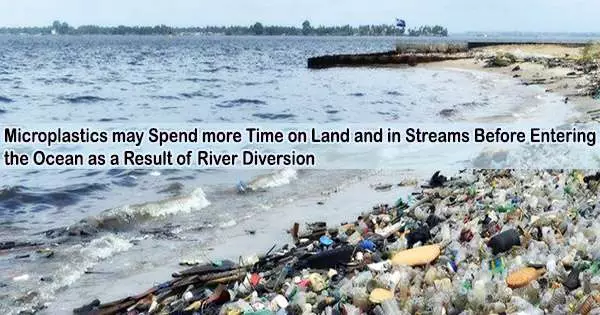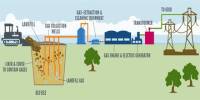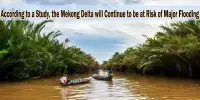According to a recent study, the amount of time microplastics spend in river catchments before they enter our seas may be considerably increased by diverting streams and rivers to irrigate crops or provide drinking water.
Microplastics are tiny pieces of plastic debris that are less than 5mm in size and are often found in the environment due to the breakdown of larger plastic items. They can be found in oceans, rivers, lakes, and even on land, including beaches.
An international team of researchers, with the University of Birmingham as its leader, highlights the effects of water management on the movement of microplastics by publishing their findings in the journal Water Research.
The water diverted from rivers spreads the microscopic plastic particles across farmland, where they may be washed back into other watercourses or nearby catchments. This can have a substantial impact on estimations of the pollutant’s flow towards our seas.
The research team studied two paired rivers in Colorado, United States the Boulder Creek and its less urbanised tributary South Boulder Creek evaluating the effects of urbanisation and flow diversions on the up-to-downstream profiles of local microplastic concentrations as well as microplastic loads, indicating the flow-weighted downstream transport of particles.
How we manage our streams and rivers can have a substantial impact on the transport of microplastics, yet these effects have not been incorporated into global models that assume downstream convergence of microplastic fluxes along river networks. Our current models may, therefore, underestimate the quantities and residence times of plastics held in river catchments and overestimate the speed with which microplastics are transported into our oceans.
Professor Stefan Krause
Data from both streams suggests a link between microplastic concentration and urbanization, as microplastic concentrations in Boulder Creek with a more urbanized catchment were higher in both surface water and sediment than in South Boulder Creek, and microplastic concentration increased in downstream direction when passing more urbanized areas.
The researchers found that the patterns of microplastic concentration in both rivers were related to the degree of catchment urbanization.
Lead author Anna Kukkola, from the University of Birmingham, commented: “We discovered strong links between the degree of urbanisation in the river catchment and observed river microplastic concentrations, highlighting how human activities resulted in immediate increase in microplastics in this mountainous catchment.”
“A key novelty of this study is the application of the loading approach which is used here for the first time for the quantification of microplastics fluxes and enabled us to not only identify microplastic sources but also determine the downstream evolution of microplastic transport patterns and in this case also the diversion of microplastics out of the river catchment.”
Co-author Rob Runkel, from the United States Geological Survey, added: “These results for microplastics are consistent with our results for other urban-derived elements such as chloride, where we are seeing 3 to 9 times more loading in the more urbanized Boulder Creek watershed.”
The international team also found that due to the size of the flow diversions from both streams, a significant amount of microplastic was taken out of each stream and carried outside of their real catchment. They calculated the removal of microplastic from the two rivers under study at a rate of over 500 microplastic particles per second (or 1,800,000 per hour).
To put this into perspective: In 2012, 241 km3 of water were diverted for agricultural purposes in North America alone with 2,670 km3 having been diverted globally. The researchers calculated that this could lead to up to 459 trillion microplastic particles being redistributed globally, with an estimated 41 trillion microplastic particles being redistributed annually out of river networks in North America based on conservative estimates based on the >63 µm particle threshold of their study.
Co-author and Principal Investigator Professor Stefan Krause, from the University of Birmingham, commented: “How we manage our streams and rivers can have a substantial impact on the transport of microplastics, yet these effects have not been incorporated into global models that assume downstream convergence of microplastic fluxes along river networks. Our current models may, therefore, underestimate the quantities and residence times of plastics held in river catchments and overestimate the speed with which microplastics are transported into our oceans.”
While toxicity assessment was not a focus of the current study, co-author Professor Iseult Lynch from the University of Birmingham noted: “The results of this study are highly relevant for estimating ecotoxicological impacts on aquatic and terrestrial environments and ecosystems, with enhanced terrestrial residence times resulting in extended (chronic) exposures.”
















